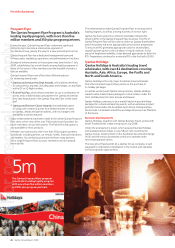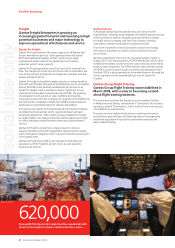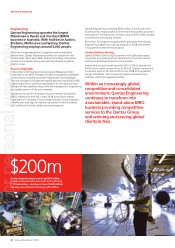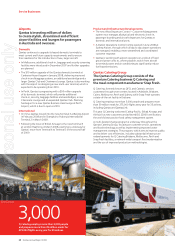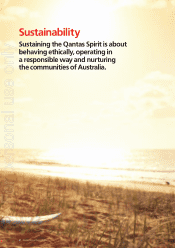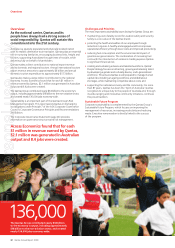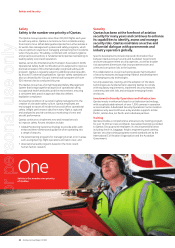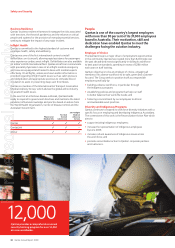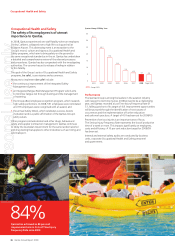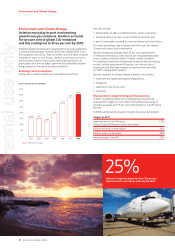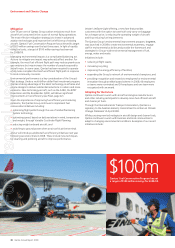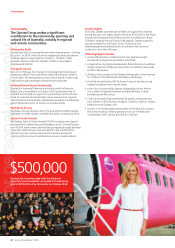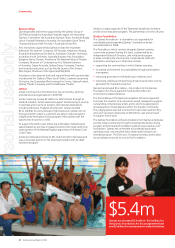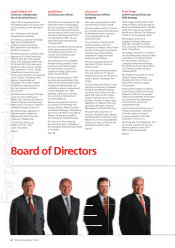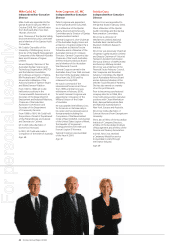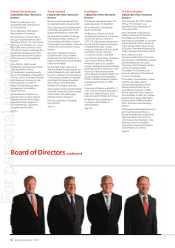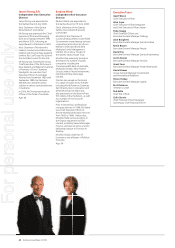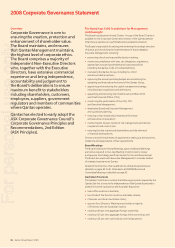Qantas 2008 Annual Report Download - page 38
Download and view the complete annual report
Please find page 38 of the 2008 Qantas annual report below. You can navigate through the pages in the report by either clicking on the pages listed below, or by using the keyword search tool below to find specific information within the annual report.
36 Qantas Annual Report 2008
Occupational Health and Safety
Occupational Health and Safety
The safety of its employees is of utmost
importance to Qantas.
In 2008, Qantas experienced one staff fatality when an employee,
Shirley Cuthbert, collapsed over a high lift truck guard rail at
Brisbane Airport. This distressing event is an exception to the
Group’s record, culture and rigorous Occupational Health and
Safety programs, which aim to bring safety on the ground to
the same exceptional standard as in the air. Qantas has undertaken
a detailed and comprehensive review of the relevant processes
and procedures. Qantas has also cooperated with the investigating
authorities. The coroner has yet to release a finding in relation
to this fatality.
The goal of the Group’s suite of Occupational Health and Safety
programs, be safe!, is zero injuries and occurrences.
Measures to implement be safe! include:
• the continuous improvement of the Integrated Safety
Management System;
• an Integrated Fatigue Risk Management Program which aims
to minimise fatigue risk through training and the management
of rostering;
• the Group eXcel employee recognition program, which rewards
high safety performers. In 2008, 591 employees were nominated
and 176 employees were recognised with an award; and
• the annual Safety Week, which celebrates success, boosts
motivation and is a public affirmation of the Qantas Group’s
safety values.
Other programs include alcohol and other drugs, behavioural
safety and supplier (contractor) management. Qantas continues
to lobby the Australian Government for the same random alcohol
and drug testing that applies to other industries such as mining and
land transport.
Performance
The Qantas Group is among the leaders in the aviation industry
with respect to lost time injuries. 2008 proved to be a challenging
year, and Qantas recorded a Lost Time Injury Frequency Rate of
5.1, falling just short of its target of 4.8. Improvement opportunities
will be pursued through the identification of root causes of
occurrences and the implementation of further education
and safe work practices. A target of 4.0 has been set for 2008/09.
Prevention of serious injuries is an important area of focus.
The Serious Injury Frequency Rate represents the loss of productive
time of a week or more. This impacts significantly on employees,
costs and efficiency. A 10 per cent reduction target for 2008/09
has been set.
Internal and external safety audits are conducted by business
units, corporate Occupational Health and Safety personnel
and government.
84% 84%
Qantas has achieved an 84 per cent
improvement rate in its Lost Time Injury
Frequency Rate since 2002.
35
30
25
20
15
5
10
0
31.7
2002
23.7
2003
17.4
2004
12.2
2005 2006
6.3
2007
5.1
2008
4.8
Target 2008
Group LTIFR
Qantas Group LTIFR by Year
7.9
For personal use only


